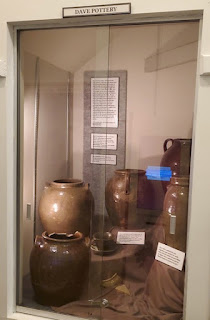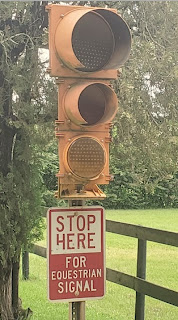The city of Aiken, named after William Aiken, SC Railroad’s first president, was founded in 1835 after railroads entered the area in 1833 and the world’s longest line, 136-miles, connected the Savannah River with Charleston. In 1871 Aiken County was formed from portions of four existing counties.
The first regional “tourists”, Hernando De Soto came in 1540 seeking gold. The next significant march through the area was that of Sherman as he crossed the state on his march to the sea. The ensuing Battle of Aiken occurred on February 11, 1865. Confederate Maj. Gen. Joseph Wheeler’s victory, a rare win against Sherman, prevented the city’s devastation.
After the Civil War Aiken garnered a reputation as health resort destination. People flocked there because of the mild climate, historic sites and accessibility. Wealthy northerners founded a “Winter Colony”, brought their horses, built luxurious venues in which to spend their time and golfed on one of the South’s first courses.
Aiken proved to be poor land for crops and as early as the 1830s the elite brought their horses here because it was perfect for training and breeding thoroughbreds. Today Aiken continues selling stabling and track time to trainees. The facilities are first-rate and the track is layered and quiet so the horses do not get distracted. In 1930 Aiken Steeplechase Association began hosting annual races. Twelve years later the Aiken Trials, part of Aiken's Triple Crown events began. A menu of equestrian events can be found online.
Once a carriage house, the Aiken Thoroughbred Racing Hall of Fame and Museum, is a 2-story excursion into the world of Aiken horse racing. The story is told through a series of thematic displays replete with awards, memorabilia, videos, photographs and interpretive panels. The second level has information on the contribution of African American jockeys and trainers. A second room is devoted to children’s activities. In the Courtyard visitors can examine training equipment and owner’s silks of 40 champion racehorses.
The best orientation to the city is the Aiken County Historical Museum. Until the 1950s this was a playground for the wealthy. When the Winter Colony residents left they the infrastructure intact and the 3-story museum is housed in “Banksia” one of the former mansions. It exhibits items from the history of Aiken County. A museum highlight is pottery by David Drake, an enslaved ceramicist, who often adorned his pottery with poetry. The 3.5-acre museum campus houses two larger artifacts, an 1808 log cabin and 1890s schoolhouse.
Aiken’s Visitors Center and Train Museum showcases railroad history through use of nine town dioramas, model trains, photographs, artifacts and displays. The Visitor Center is located here and maps and brochures are available.
In 1950 the “cold war” took over Aiken in the form of the Savannah River Site designed to make nuclear materials. In 1946 the Atomic Energy Commission was established. In 1949 the USSR tested their first atomic bomb and then moved hydrogen, 1000 times more powerful, bombs. America felt the bomb was an immediate threat and in 1950 chose Dupont as a contractor. They examined 114 US sites for the potential “atomic town”. It had to be near water, out of Russian range, near a larger town, and have certain soil and weather conditions. A site near Aiken was selected November 28, 1950. One week later the people living there were told to move and compensated for their land and homes.
Construction took place from 1950-55 and once completed the research facility functioned until 1989. The museum tells the story of the plant, the workers, the displaced residents and that of plutonium and its storage and disposal.
The SC African American Heritage Commission designated Redcliffe Plantation State Historic Site one of the"Top Ten Sites to Visit in South Carolina". It was named after the red clay on which it sat. The 1859 mansion was slave built for James Henry Hammond senator, governor, cotton planter and staunch defender of slavery. He owned four plantations, 14,000-acres, and approximately 300 slaves with from 20 to 50 working at Redcliffe.
Tours of the 2-story Greek revival mansion are offered and more than 4,000 artifacts are displayed. The 369-acre estate has an 1861 magnolia tree alley and outbuildings that may be visited. Two 1857 extant slave quarters provide a snapshot of the life of the enslaved. There were originally four double-pen cabins.
The self-guided Historic Aiken Tour consists of 94 sites of architectural or historic importance. Each site is marked with a Historic Aiken marker. Sites date from the 1800s. One of the sites is the stunning “Queen of Aiken”, the Willcox Hotel. Originally three structures, the buildings were joined to become the lobby of the hotel. The white pillared Colonial Revival building is listed on the National Register of Historic Places. The rooms are sumptuous and feature deluxe amenities, service and cuisine. Notable guests have included Winston Churchill, the Duke of Windsor and Elizabeth Arden. A stay here is a traveler’s delight.
Hitchcock Woods is the largest privately owned urban forest in the US. The 2,100-acres are under the management of the Hitchcock Woods Foundation. The points of interest include the 1929 brick Memorial Gate and Sand River that weaves through the center of the woods. Legend has it that an Indian chief was told in a vision to take his ill daughter to be healed to the Sand River. Her cure contributed to the reputation of the area as being a place of healing.
There is something new to discover in Aiken around every corner and down every street. Become an Aiken adventurer. www.visitaikensc.com

























No comments:
Post a Comment